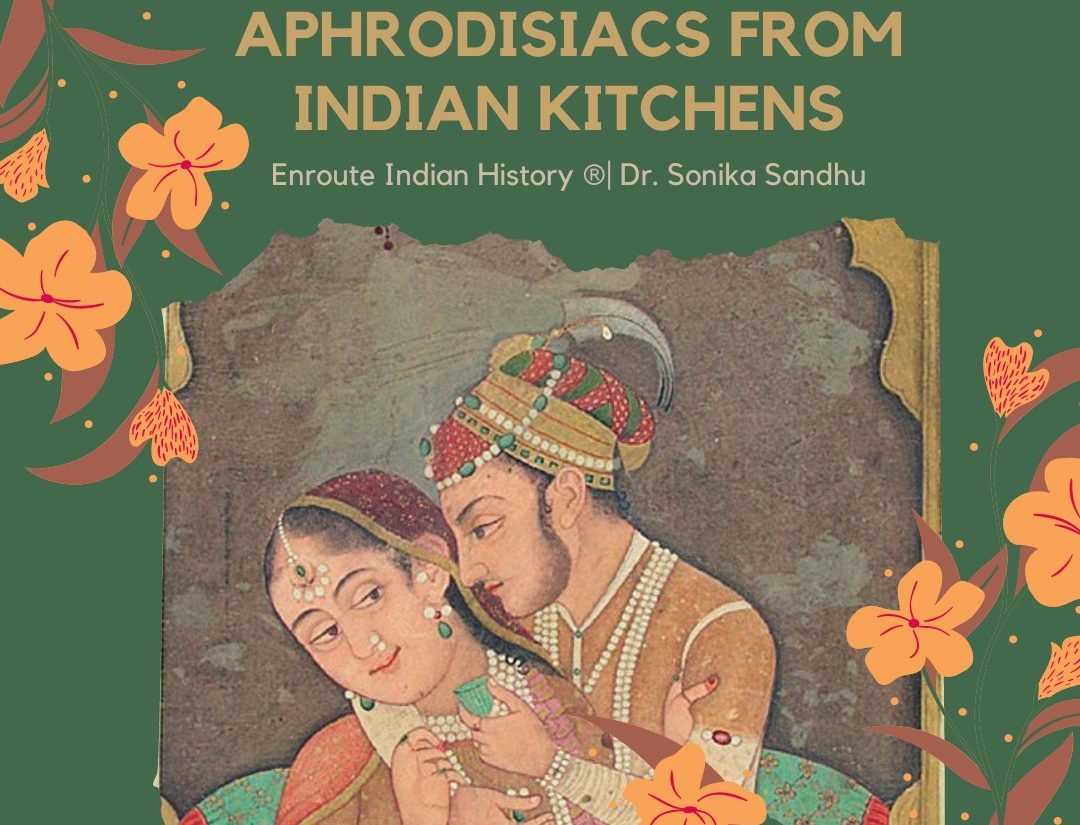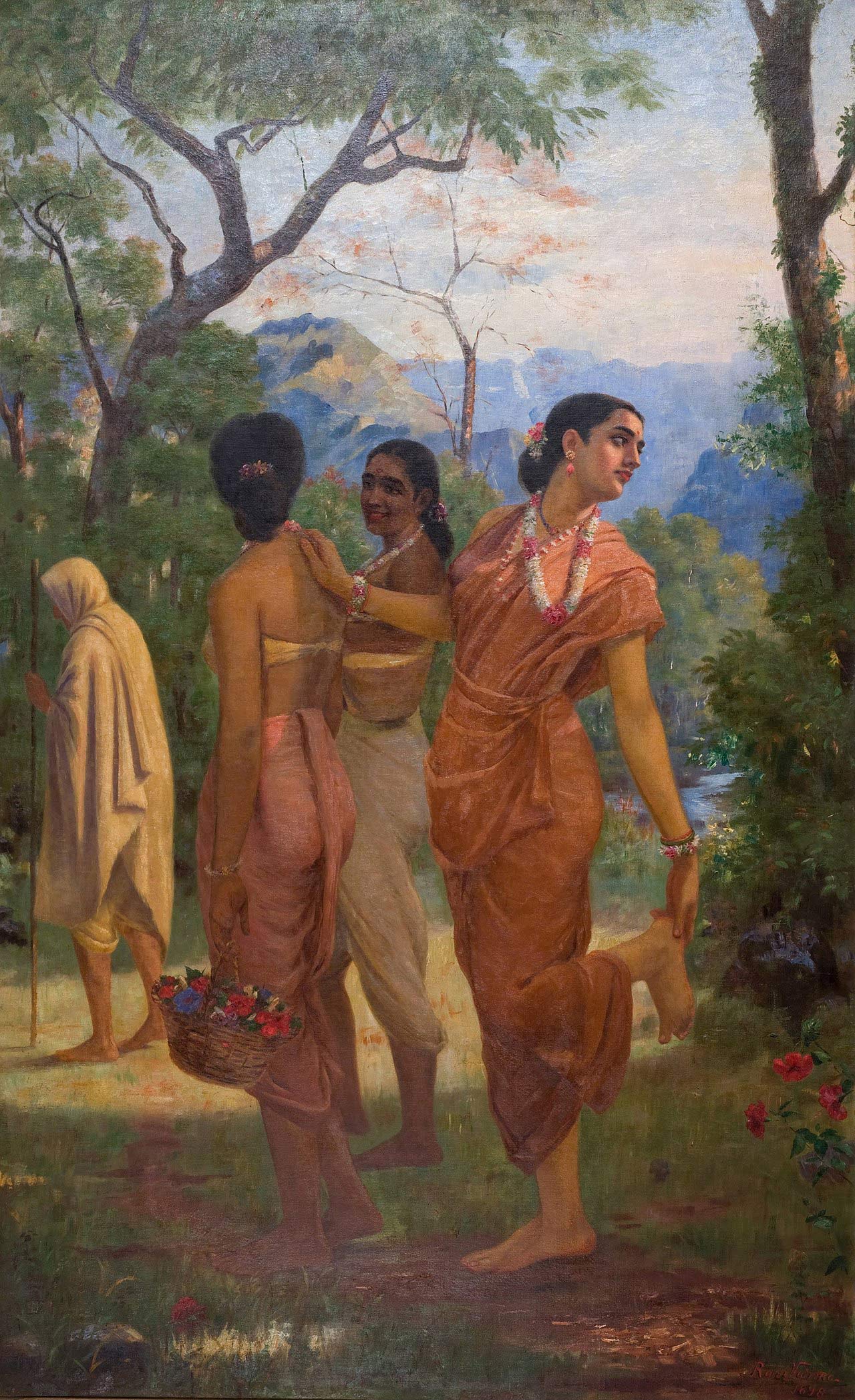
Article by EIH Subject Matter Expert
Dr. Sonika Sandhu
Procreation is one of the primeval needs and desires of all species and in this respect human are no different. To enhance, substantiate and increase the number of progeny humans have employed different strategies and methods over the course of their development. Here the mention of aphrodisiac comes. An aphrodisiac is an edible substance can be an eatable or a drink that imparts amorous qualities, increases vigour and sexual drive, in some cases they also help with certain dysfunctions and infertility. The word finds its derivation from “Aphrodite” the Greek Goddess of Love. In general aphrodisiacs have two aspects to them, the psychophysiologicalpart which affects and provides an visual, tactile, olfactory and aural stimulus and the preparations which go into making and formulations of the aphrodisiac. One of the oldest medical treatise ‘The Charaka Samhita’ also mentions certain foods as aphrodisiacs and their effects in treating certain ailments for exampleAmla, or Indian gooseberry, especially the smaller variety, is considered the best antidote for ‘those who have been weakened by sexual indulgence and wine and poisons’. Even today Ayurvedic doctors and practioners believe that amla helps acts as an aphrodisiac and has good effects if consumed over a long time. However as mentioned above, the correct preparation is also key, preparations of the aphrodisiac by ayurvedic method would require a balance of temperature, use of quality ingredients in absolute measurement in short quantity and quality both are to be kept in mind during formulations. The right preparation determines the efficacy of the medicine.
India is a country of continuous cultural traditions which extends into every aspect of our lives from daily rituals, to food and diets and even to aphrodisiacs. It would be of interest to state that our humble Indian kitchen has composite and a varied variety of aphrodisiacs which we may be consuming without expounding on their aphrodisiac nature. Some of these common ingredients and food items are:
- Shatavari: Asparagus racemosus
It translates into ‘a woman with hundred husbands’. This is a type of bitter sweet herb. It is popular as the Indian asparagus and contain phytoestrogens, which helps women who are in menopause. It also regulates hormonal secretions and maintains a normal menstrual cycle. Therefore it is advised more for women than men. Being an aphrodisiac it increases the female libido.The best way to have it is to combine 1/2 tsp of Shatavari powder with water or milk and drink it before bedtime. It is known to have both calming and stimulating effects. Today many commercial ayurvedic companies like Himalaya sell capsules of this plant in which a powdered concoction is prepared with active ingredients from Shatavari.
- Ashwagandha:
In today’s fast paced world, tensions and anxiety go hand in hand. According to experts many times the root cause of infertility and conception is stress. Here is where Ashwagandha comes into play. Ashwagandha helps to reduce stressby lowering cortisol levels and also has anti-inflammatory properties. The ancient treatise on love and lifestyle ‘The Kamasutra’ has recognised it as a powerful sexual stimulant, it is also known to improve levels and quality of sperm and can boost fertility in men. Best ways to consume is at night with a glass of milk.
- Shilajit:
It is known by many names such as mumie, moomiyo, mineral pitch etc. According to Ayurveda it enhances sexual vigour and increases durations of sessions. It is also known to enhance testosterone in men, and is generally not given to women for this reason. Shilajit is obtained from rocks, it is resembles a tar like resin in its consistency. It is generally found in Himalayas and other mountainous regions. Shilajit besides increasing testosterone levels also effects the body heat and core temperature. It is found in two forms: gomutrashilajit and karpoora shijalit. Gomutra shilajit has a cow urine odour to it and the Karpoora shilajit has a camphor odour.
Now coming to some of the common and more recognisable ingredients and products from the Indian pantry. Starting with
- Nutmeg
It is also known as Jaiphal in India. It was a well-known aphrodisiac in India and its popularity extends till middle east and even in some south east Asian regions like Indonesia. This generally improves the sexual vigour, help in increasing sperm count, prevent pre mature ejaculation and also acts as a stimulant. It is commonly consumed in Kerala possibly because of its easy availability. It is also a popular spice and is part of many dishes of the Indian cuisine.
- Milk
Kamasutra refers to it as the champion of aphrodisiac. Milk is part of many ancient remedies and is a key component of Panchamritam (A combination of milk, yogurt, sugar, butter and honey)described in treatise. It is known to dramatically increase the sexual vigour and provides strength. Besides cow milk the Kamasutra also mentions one interesting milk drink “Drink milk with sugar or better still testicles of a goat or ram boiled in it.” India has a high rate of dairy consumption, milk and its products are consumed in every form and way. From butter, to drinking milk, to making sweets and desserts to being part of our beloved tea with it the variety in its consumption is enormous. Every household follows the morning ritual of getting milk, boiling it and preparing it for the day’s consumption in various forms.
- Pomegranate:
It is a winter fruit and is easily available. It is consumed as a juice along with beetroot and carrots in winters, eaten as a whole and is also generously sprinkled over chaats in the northern part of the country. Coming to its aphrodisiac nature since antiquity it has been associated with passion and fertility. It helps with sperm quality, sex drive and mobility and regulates the hormones. Its anti-oxidative nature negates the oxidative stress and brings about vigour and enhances performance
- Ajwain:(Trachyspermum ammi)
It is called as Bishop’s weed and is commonly found from Egypt to India and has been part of medicinal repertoire for centuries. Ajwain seeds contain thymol and is also an aphrodisiac. A common way to consume is to crush the seeds and fry them in ghee or butter with equal amount of tamarind seeds. According to traditional Indian herbal medicine taking this powder at night with milk increase virility and cures premature ejaculation.
- Asafetida:
Commonly known as Hing, it is used in powdered form in many Indian dishes. Besides being a sexual stimulant it is also a remedy for colic and is a laxative. Hing is a common place ingredient especially in Jain households which do not consume onions and garlic. It is added to impart flavor to vegetables and lentils in absence of the onion garlic flavors.
- Cardamom:
Popularly known as Elaichi, it is a beloved part of the masala chai, it is also an aphrodisiac. It is a sensual spice attributed with erotic properties and is used in essential oil formulations. It has a peculiar nature wherein it cools the body when it is hot, and provides warmth when cold. Because of this tendency Cleopatra was known to take cardamom infused bath. It is generally consumed with tea, or with boiled milk. Boiling with milk imparts the milk with its flavor and is relished in many countries, in some it is even added to coffee. However its usage has to be carefully regulated as over consumption may cause more harm than good.
- Cinnamon:
Cinnamon is also one of the spices native to the Indian Subcontinent. It is used to treat abdominal disorders, menstrual pains, infertility in some cases, impotence and lack of sexual desire. It is used to impart flavor to coffee, on desserts and some curries as the dry spice.
- Cloves:
These are basically dried flower buds of Jambosa caryophyllus and are known for their aphrodisiac properties in Asia and China since the 3rd century BCE. The Danish medieval herbalist H. Harpenstreng noted the value of cloves, stating that they “makes the man desire the woman”, and that they also promote digestion.
- Saffron:
This is a rare and exotic herb for the world but it is indigenous to the Indian Subcontinent found specifically in Kashmir. Kashmir valley is one of the few places on Earth where it is found naturally. Besides of its exclusivity, it has been used in rituals of beauty and love. It mimics hormones and increases sensitivity in erogenous zones of the body. But till date it is not exactly which part of component imparts it the aphrodisiac properties. It is consumed with milk, in desserts and is common to the biryanis.
- Almonds:
These are also common to the Indian pantry and are regarded as fertility symbols. Nuts in general are thought to have fertility and aphrodisiacal nature and almonds are no exception. The aroma of this nut apparently arouses passions in women. In popular culture, Alexander Dumas was said to be very fond of almonds and dined on them every night before meeting his mistress. In India it is a common place ingredient in many of our dishes. Badam milk is famous and consumed generously in winters, it is used in halwas, during summers it is soaked overnight and consumed in the morning as part of breakfast, it is also a snack on the go and healthy eaters always keep its stock at hand.
These were just some of the food items and ingredients which we come across in our kitchens on a day to day basis. There are many more which have similar aphrodisiacal nature which we may be consuming on the side. Our kitchens house a large number of ingredients and components and they differ from region to region, continuously evolving according to the cuisine. For example the kitchens in south have different spices in their spice box, the curry preparations are different with extensive usage of coconuts, on coastal regions sea food comes into the kitchen and again a new variety is seen in the ingredients. Similarly as we go north, kitchens again evolve to house specific regional food. In Jammu and Kashmir, tikki masala is common for curries and rajma preparations, there is less use of curry leaves and absence of coconuts in prepared food. The examples can go on and on.Therefore we realise the richness of our cuisine, ingredients and diets have also enhanced the aphrodisiacs available to us and insured India to have healthy and lively populations throughout.




















